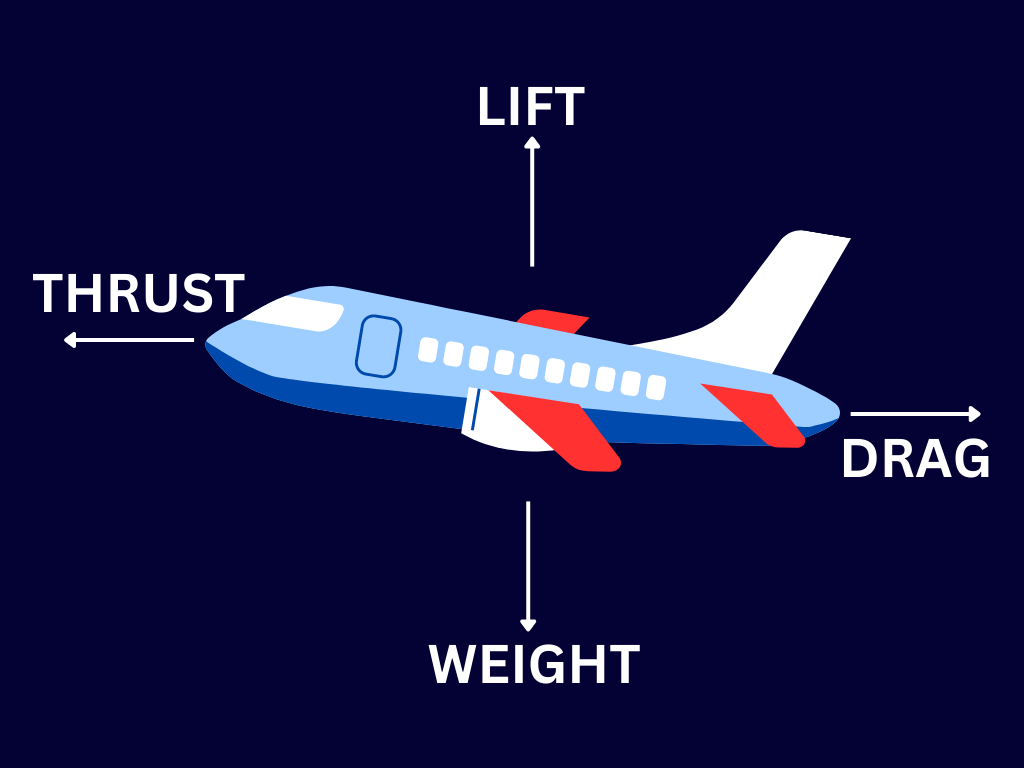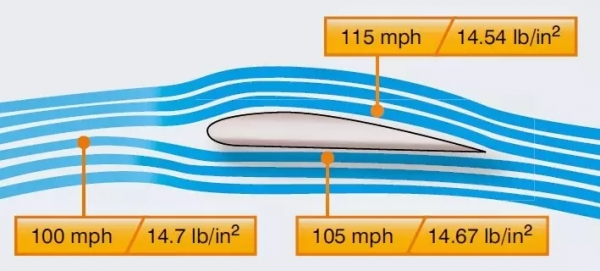Science & Technology
High Temperature Impacting Flight Operations
- 05 Aug 2024
- 7 min read
For Prelims: Global Warming, Aviation Basics, Flight Operations.
For Mains: Impact of Global Warming on Aviation Industry, Causes, Impact of Plane Crashes, Implications and Way Forward.
Why in News?
Recently, several air operators cancelled their flights to Leh citing high temperature in the region that led to runway restrictions.
- The mountainous region has seen a rise in temperatures due to climate change in India's cold desert.
What is the Impact of High Temperatures on Aircraft Operation?
- Reduced Lift: Less dense air provides diminished support for aircraft wings, necessitating higher speeds and longer runways for takeoff. The lift-to-drag ratio is adversely affected, impacting overall aircraft efficiency.
- Engine Performance Deterioration: The combustion process within aircraft engines is compromised due to the decreased oxygen content in thinner air. This results in reduced engine thrust, further exacerbating takeoff challenges.
- Extended Landing Distances: The reduced effectiveness of reverse thrust in less dense air prolongs the landing process, requiring greater runway length for deceleration.
- A 2023 study revealed that global warming is expected to increase the take-off distance for Boeing 737-800 aircraft by an average of 6% during the period of 2071-2080, compared to 1991-2000.
- This change is particularly significant at low-altitude airports, necessitating an additional 113-222 meters for take-offs in future summers.
- A 2023 study revealed that global warming is expected to increase the take-off distance for Boeing 737-800 aircraft by an average of 6% during the period of 2071-2080, compared to 1991-2000.
- Operational Constraints: Airports situated at higher altitudes, where air density is naturally lower, are particularly vulnerable to temperature-induced flight restrictions. During periods of extreme heat, takeoff weight limits may be imposed, and flight operations could be suspended altogether.
Note
- The global average temperature has risen by at least 1.1 degrees Celsius since 1880, with India experiencing an increase of approximately 0.7 degrees Celsius compared to 1900 levels.
What is the Principle of Aircraft Flight Operation?
- All flying objects that use wings require air, as moving air generates a lifting force essential for maintaining the flight of kites, airplanes, and balloons.
- An aircraft experiences 4 basic forces:
- Lift: The upward force acting on the aircraft which helps the airplane to fly.
- Drag: The backward force caused by the resistance of air flow.
- Thrust: The forward force produced by the engines of the aircraft
- Weight: The body and cargo weight of the aircraft acting in a downward direction.
- An aircraft flies when the lift force generated by its wings overcomes its weight. To achieve this, the aircraft requires sufficient forward speed.
- The engines provide thrust to propel the aircraft forward. As the aircraft moves, the airfoil-shaped wings interact with the air, creating lift. This lift is generated due to a pressure difference between the upper and lower surfaces of the wing.
- The curved upper surface of the airfoil accelerates the air flowing over it, reducing the pressure according to Bernoulli's principle. Simultaneously, the air flowing under the wing is slightly compressed, increasing pressure. This pressure difference creates an upward force, lifting the aircraft.
- The angle of attack, the angle between the wing and the oncoming air, significantly influences lift. A small increase in angle of attack generates more lift, but excessive angles can lead to a stall.
- To maintain level flight, the lift force must equal the aircraft's weight. Pilots control lift by adjusting the wing's angle of attack and shape using control surfaces.
What are the Causes of High Temperature in Leh-Ladakh Region?
- Altitude: Leh-Ladakh's high elevation of approximately 3,000 metres causes thinner atmospheric density.
- Further the region's clear skies, minimal cloud cover, and sparse vegetation which increases solar radiation penetration and results in higher daytime temperatures during the summer.
- Topography: The Himalayas and Zanskar ranges create a rain shadow effect (form rain shadow desert) by blocking moisture-laden winds, resulting in minimal precipitation.
- This dry air enhances temperature fluctuations, causing higher daytime temperatures.
- Climate Change: Global warming has led to rising temperatures globally, affecting cold deserts as well. This phenomenon alters local weather patterns, potentially leading to warmer conditions in Leh-Ladakh.
- Human Activities: Urbanisation and infrastructure development in Leh and surrounding areas create localised warming effects, known as the urban heat island effect.
- "Urban heat islands" occur when cities replace natural land cover with dense concentrations of pavement, buildings, and other surfaces that absorb and retain heat, increasing energy costs, air pollution, and heat-related illness and mortality.
- Additionally, increased human activity, including tourism and military movement, contributes to rising temperatures.
|
Drishti Mains Question: What is Global warming and its implications on the aviation sector worldwide? |
UPSC Civil Services Examination, Previous Year Questions (PYQs)
Prelims:
Q. “Momentum for Change: Climate Neutral Now” is an initiative launched by (2018)
(a) The Intergovernmental Panel on Climate Change
(b) The UNEP Secretariat
(c) The UNFCCC Secretariat
(d) The World Meteorological Organisation
Ans: (c)
Mains:
Q. ‘Climate change’ is a global problem. How India will be affected by climate change? How Himalayan and coastal states of India will be affected by climate change? (2017)









